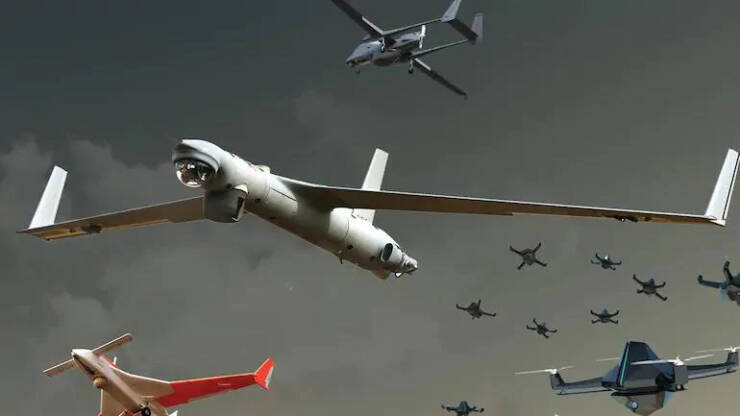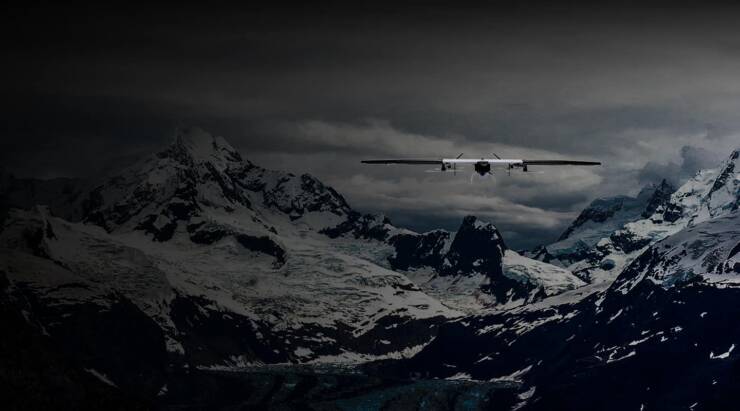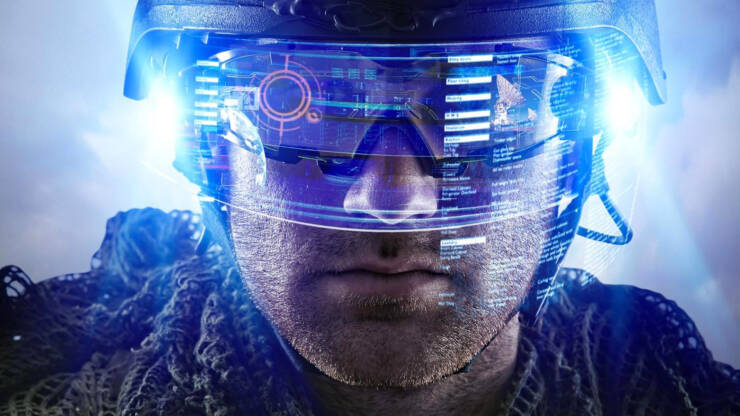
Actions of a deceitful and recalcitrant Pakistan, and repeated coercive military posturing of an assertive China, saw deterrence nearly fail recently. With China riding high on the IT-Cyber led RMA, amidst growing strategic uncertainty, episodic crises loom large. The only option to deter both adversaries by denying gains, imposing costs or incentivising restraint, is for the Indian Armed Forces to accelerate the pace of its military transformation by leveraging disruptive technologies and injecting Jointness through joint C4I2SR, targeting, air defence and logistics, concurrent with critical modernisation goals, underpinned by realistic budgetary support and an “Atmanirbhar” Military-Industrial ecosystem.
Context – Nearly Failed Deterrence
Since independence, Pakistan was accorded primacy as an adversary, given its obsession to resolve the Kashmir issue by prosecuting wars — conventional or proxy, till the Kargil (1999) misadventure. Concurrently, the “peace” ushered by the slew of agreements since 1993 post the rapprochement in 1987, started turning into “disquiet” over the last 10-15 years, with growing Chinese stridency on the LAC. The shaky mutual trust, dented at Doklam (2017), was shattered in May 2020 by China’s salami slicing1 in Eastern Ladakh. India’s two-front, worst case spectre, is now a reality, with a “tripwire LC” and a “tense LAC”, concurrent with PLA Navy’s growing presence in the IOR.2 3
China is ring-fencing India with its “string of pearls strategy”4. China perceives India as a long-term threat to her interests and aims to narrow India’s strategic options, keeping India unhinged by orchestrating new security challenges in her neighbourhood5. China’s growing strategic nexus with Pakistan, its revisionist agenda, India’s steadfast support for Bhutan, infrastructure development in the border areas, India’s Tibet connection, participation in the “Quad”, domestic sentiment in India against China post the COVID-19 pandemic, India’s pushback against BRI and RCEP and India’s outreach under SAGAR6 are friction points that have the potential to precipitate a crisis. China envisions a “unipolar Asia”, and is arguably India’s “primary adversary”. The Indo-China relationship has been reset, with India’s External Affairs Minister outlining eight principles and three mutuals7.
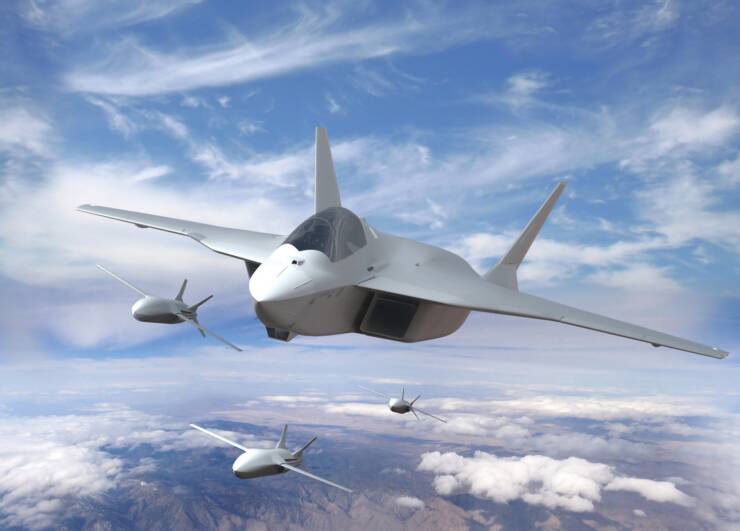
Collusive Threat & Fragile Deterrence
Post the Eastern Ladakh crisis, the security dimension of Sino-Pakistan relationship has regained primacy8, emboldening Pakistan9. General Bipin Rawat, the Chief of Defence Staff (CDS), has acknowledged this collusive threat. 10 11 Both China and Pakistan practice strategies to keep the provocations within the “grey zone” between peace and conflict. However, at both Balakot and Galwan, conventional deterrence nearly broke down. Unrelenting competition in an environment of strategic uncertainty, punctuated with episodic crises, fraught with the possibility of precipitating limited conflicts, is the new security paradigm in South Asia. The moot question is, how should India’s military instrument of power transform to secure winning outcomes in the competition and crises without crossing the conflict threshold, deter a two-front collusive conflict contingency and fight to win by securing political objectives, should deterrence fail?
To devise a military transformation strategy, we need to examine how the PLA will fight.
PLA – Informationised & Intelligentised Joint Operations
“Military mechanisation and informatisation by 2020”, the first step of military modernisation articulated in 1997, was reported to be completed in 2020. Chinese President Xi Jinping implemented major reforms in 2015-16, restructuring Regional Military Commands into Theatre Commands, renaming the Second Artillery Force as the Rocket Force and upgrading it as a full Service, creating a Joint Logistics Support Force and a Strategic Support Force (SSF). Analysts opine that force modernisation of Russia and China bear similarities12. The PLA started graduating from combined arms operations to joint operations in 1999.
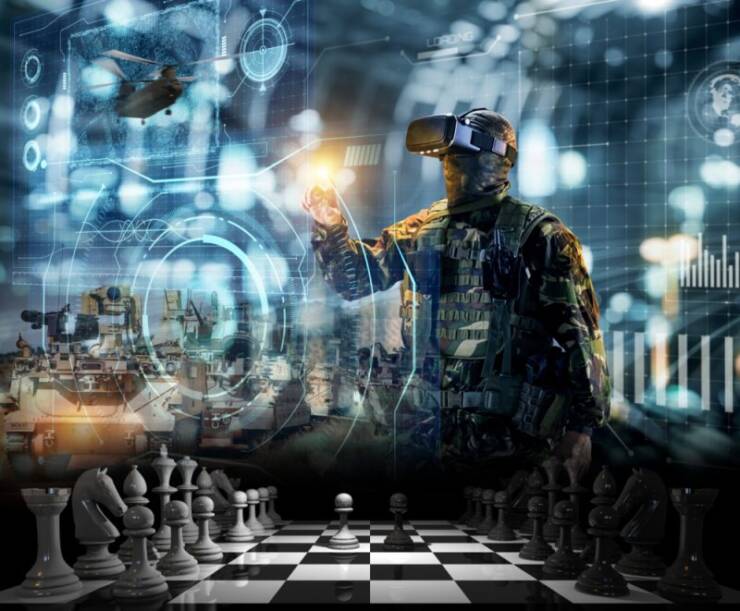
In March 2021, Xi Jinping split the “modernisation” goal (2035), to achieve the 2027 PLA Centennial Goal13, to accelerate mechanisation, informatisation and intelligentisation, i.e. integration of AI and related technologies14.
The most significant change is the SSF (Space, Cyber & EW), which targets the cognitive domain, reflecting the recognition of information as a strategic resource15. This is aligned with the PLA doctrine of the “three non-warfares” – non-contact, non-linear and non-symmetric warfares. The PLA also advocates political warfare, which includes public-opinion, psychological and legal warfare, to undermine the enemy’s will and morale16.
The other significant evolutionary change is the robustly networked sensor and shooter technologies to support “stand-off” warfighting. The US DIA has graded PLA’s core strengths as long-range precision strike and information warfare, but flagged rigid command structure and joint warfare as key vulnerabilities17. The next 10-15 years of the PLA’s modernisation are deemed crucial18.
Future conflicts will see attempts to destroy the adversary’s forces from a stand-off distance, to win with minimum “force on force” combat, by targeting the cognitive domain.
Transformation – The Import
Transformation means to “change the form, into something different”. Transformation ushers a profound change in the method of fighting and organisation culture to gain a relative advantage. It is accompanied by transformative changes in technology, organisation structures, doctrines, people and processes. It is driven by necessity (technology and adversary) and opportunity (stability and growth).
Revolutions in Military Affairs (RMA) are periodic major changes in the character of warfare and enhance effectiveness manifold19. The sixth, IT-Cyber led RMA is ongoing since the 1980s. Transformation is in reaction to, or in anticipation of, an RMA. Effects based operations (EBO), attacking the enemy’s will to fight, not the mass, and Network-Centric Warfare (NCW) underpin the ongoing RMA. NCW generates increased combat power by networking sensors, decision makers and shooters, across domains, to achieve shared awareness, speed of decisions, greater lethality and a high tempo of operations.
A Fourth Industrial Revolution (4IR), which is IT-Cyber-led, is building on the Third (digital) revolution. 4IR technologies are best harnessed when they are fused together20 and characterised by a blurring of the lines between the physical (land, sea, air and space), digital (cyber & information) and biological (human/cognitive) spheres. These technologies include artificial intelligence (AI), robotics, IoT, autonomous systems, additive printing, biotechnology, materials, cognition, hypersonics and quantum computing. The Multi-Domain Operations (MDO) concept has evolved from the combined arms joint doctrine, and spans all domains described here.
The pursuit of stand-off capabilities by the PLA is a reflection of Bartosiak’s conclusion that the most important capability will be the ability to maintain its own reconnaissance-strike system, while turning off the enemy’s21. The US has, therefore, embarked on the “third offset” strategy22 to maintain its warfighting advantage. Russia has also exploited 4IR technologies by combining these with advanced pre-4IR systems23. 4IR technologies have empowered non-state entities and states that pursue hybrid warfare24 like Hezbollah’s ‘13 principles of war’ against Israel25.
The Transformation of Indian Armed Forces – A Necessity and an Opportunity: China is on course to achieving its modernisation goals by 2035. 4IR technologies have changed the character of warfare, as demonstrated in Crimea, Syria, Ukraine, Nagorno-Karabakh and Gaza. Our Forces have no choice but to transform. The priority for transformation is clearly Jointness across key warfighting functions and modernisation with 4IR technologies.
CDS – Jointness and Transformation Mandate: The CCS has mandated that the CDS will bring about jointness in operations, logistics, training, communications and maintenance, within three years (end 2022). The mandate of the DMA included, inter alia, establishment of joint Theatre Commands (TCs) 26. The CDS has emphasised that transformation is a prerequisite to stay relevant27.
Transformation – Macro Determinants
- Budgetary Commitment and Military Industrial Complex: It is imperative that the transformation priorities are resource informed and leverage indigenisation, especially post COVID-19. The transformation process, therefore, is likely to exceed a decade.
- Force Structure & Design: These will be governed by the political direction on use of force as an instrument of deterrence28 and securing strategic goals through all instruments of power29. Political acceptance of “ways” of deterrence-attrition Vs manoeuvre30 31 will dictate the “quantitative” scope of the transformation.
Transformation Strategy – Foundational Principles
The transformation strategy, aligned with the National Security Objectives, should be guided by a few foundational principles:
- Owned by the Political leadership with assured budgetary support. The non-lapsable fund recommended by the 15th Finance Commission should be leveraged.
- A 10-year capability development (CD) roadmap, with tri-service priorities to be promulgated by the CDS and implemented by the Services, through five-year CD plans and two-year roll-on plans.
- Transformation strategy to accord due salience to capabilities in the information and cognitive domains.
- “Domain Ownership” to give way to “Joint Domain Complementarity” between the Services.
- Adaptable 4IR technologies to be developed in mission mode. Private industry strengths should be leveraged.
Transformation for MDO – The Lines of Effort
To transform for MDO (4IR), the following lines of effort are critical:
- Networked and survivable Joint C4I2SR systems and weapons, to gain information and decision dominance (faster OODA cycle), enhancing tempo of operations and leveraging surprise.
- Persistent multi-agency surveillance of critical segments of disputed boundaries and real-time sharing of intelligence.
- Long range, precise and lethal stand-off engagement capabilities.
- Robust cyber, EW and Information Warfare capabilities.
- Joint Air Defence.
- Jointness in Logistics.
Transformation – A Non-Starter Sans Joint NCW
Jointness in war fighting is not feasible without Joint communications, Joint C2, Joint ISR, Joint Targeting and Joint Logistics. The Indian military’s aversion to jointness has drawn wide criticism.32 33
Joint C4I2SR – The Alpha and Omega
The following capabilities are a sine qua non:
- The DCN (Tri-Service Voice, Video and Data Network) can be exploited for joint C2, operations, intelligence and logistics. NFS needs to be expedited.
- All three Services static networks (AFNET, NEWN and ASCON) are robust, but are Service-centric. Integration needs to be done post haste, based on functional requirements.
- The three Services have independent C2 and Decision Support Systems. IACCS of the Air Force is very robust. The Navy operates NC3I with IMAC for disaster management and has a very robust MDA architecture through Trigun. The Army has ACCCS for ground fires and BSS for shared surveillance. These need to be integrated.
- For Joint AD, IACCS gets the feed from radars countrywide. Its extension to ground forces, the last mile, should be expedited.
- The GIS of the three Services should be made interoperable and a cloud based database should be created.
- ISTAR needs to be developed as a Joint Tri-Service Project.
- There is a need for a tri-service Joint tactical radio communication system. Each Service is developing service-specific Software Defined Radio (SDR). A tri-Service SDR (HF/UHF /VHF), with the appropriate link standard, needs to be developed.
Theatre Commands (TCs) – ‘Graduated’ Approach
The structure and functions of TCs are being evolved. The Joint Air Defence Command and the Maritime Commands could be created by 2021, and the rollout of continental TCs could commence in 2022.34 As the TCs evolve, there would be a role reversal in responsibilities for operations. Currently the Service Chiefs will continue to be responsible operationally. After the model matures (7-8 years), the CDS could assume the operational responsibility while equipping, training and logistics will become the responsibility of the Service Chiefs35. The COAS has also opined that the fruition of TCs will take a number of years36.
Apprehensions have been voiced that the TCs might perpetuate the dominance of the army37. These apprehensions emanate from the tensions inherent in dedicated allocation of critical resources like fighter assets to a TC, losing flexibility. A “Graduated” approach could offer a solution. The operational TCs could be grouped with additional tri-service assets, as required for a given operational task or contingency, which could build up during the “crisis stage”. Periodical joint exercises under the TCs would leverage affiliations, supplemented by training under the “provider Service”. This could be reviewed based on the experience gained.
Logistic Management & Sustenance
All three Services have robust inventory management systems. The Navy has the ILMS/SLMS, the Air Force has IMMOLS and e-MMS, and the Army has CICP (under completion). While the inventories are varied and large, there is significant commonality. There is a need to engineer integration of the three. The three Joint Logistic Nodes set up in 2020 should provide the start point.
A More Joint Acquisition Process
The three Services have robust structures for the acquisition process, which needs to be replicated at HQ IDS, to ensure rightful ownership for tri-Service projects. The following approach should be followed:
- All single Service requirements must be examined from a tri-service perspective and the desired interoperability and compatibility be specifically included in QRs.
- The CDS must get the 10-year ICDP approved and implement the Five-Year DCAP and the two-year roll-on (AAP). The DAC must honour the priorities accorded by the CDS, adhering to the yearly budgetary allotment.
- The CCS should be apprised of the progress of Joint capability development every six months.
Transformation Driven by Technology
Recent asymmetric conflicts in Afghanistan, Ukraine, Syria and Gaza have demonstrated the advantages of 4IR technologies. However, asymmetry in outcomes diminishes38 against a near peer opponent. Indian forces, still pursuing second offset technologies (C4ISR and precision targeting), may not deter China, which is implementing the third offset (4IR) technologies39. Parity must be sought.
The 4IR technologies to be accorded priority are:
- Artificial Intelligence (Robotics, ISR, Maintenance, Cyber, C2, Autonomous Vehicles, Swarming, Loyal Wingman, Counter-Deep Fakes). HAL project “ALFA-S”, a “loyal wingman”, should be expedited. Idea Forge has already developed SWITCH UAV and more of these should be fielded.
- Hypersonic Weapons (Hypersonic Technology Demonstrator Vehicle (HSTDV), demonstrated by DRDO in Sep 2020, should be operationalised early)
- Directed Energy Weapons (ASAT, SHORAD, Counter UAV and Microwave)
- Biotechnology (Adaptive Camouflage, Self-healing body and vehicle armour, Medicine, Diagnostics)
- Quantum Technology (Communications – already demonstrated by DRDO, encryption, stealth, radar, sensing)
Modernisation Priorities
- Air Defence: The impending delivery of Triumf (S-400), already fielded indigenous SAM (Akash), ARM (Rudram) and MRSAM, and under-development QRSAM will render the AD environment very potent, India’s own A2AD.
- Night Warfighting and Anti-Tank Capability: Third generation Thermal/Image Intensification NVDs, Nag, Dhruvastra (Helicopter-based), laser guided ATGM (4th and 5th Generation), the SANT extended range aircraft-based anti-tank missile and the MPATGM (Man-portable) need operationalisation.
- Missiles and BMD: Operationalisation of BrahMos-2 and Shaurya with a 750-1,000 km range40 should be expedited. Indigenous BMD and the proposed National Advanced Surface to Air Missile System (NASAMS) should be prioritised. In view of the long-range conventional ballistic missile capabilities of our adversaries, Pranash (200 km) should be operationalised, to ensure the desired proportionality and reciprocity.
- Smart and Intelligent Munitions: The Fast Track Procurement (FTP) has been extensively utilised in the recent past to procure smart munitions like SPICE-2000, Derby-ER missiles, Spike ATGM for LCH, SPYDER AD missiles, HAMMER PGMs, MICA AAM and Excalibur rounds for 155 mm M777 howitzers. These critical requirements should be indigenised on priority.
- Air Domain: Pending the operationalisation of AMCA (10 years), voids should be addressed on priority by inducting additional MMRCA, upgradation of MiG-29, AEW&C, Refuellers, Heron-TP armed drones and Ghatak Combat drones should be expedited. Intelligence Surveillance Targeting and Reconnaissance (ISTAR), under acquisition from the US, should be fast-tracked. This system, which provides a COP41 for targets on ground as well, should be a Joint Tri-Service Project, for optimal multi-domain exploitation.
- Maritime Domain: The debate over the third Aircraft Carrier and six SSNs (nuclear-powered attack submarines) needs to be settled at the earliest. Pending realisation of the P75 (I) project, critical capability voids in the submarine fleet need to be addressed. Mine counter-measure vessels, Fleet Support Ships, NUH, NMRH, AEW Helicopters, ship based UAVs and LPDs are a priority.
Defence R&D and Innovation
Innovation for Defence Excellence (iDEX) is seeing the Army, Navy and the Air Force developing about 10 projects each. Idea Forge demonstrated “swarm” drones in Jan 2021 within months. However, projects in critical joint functional areas like communications and imagery, presently being progressed individually by the Services, should be taken up as joint projects.
Doctrinal Transformation
Analysts have argued that the outcome of military land battles is determined by force employment, rather than technology or preponderance42. The impact of technology can be mitigated by concealment and agility. The al-Qaeda was not particularly vulnerable to stand-off attacks43. These lessons should be factored doctrinally. Belting out written doctrines on jointness has no meaning unless we have Joint Communications, Joint C2, Joint Surveillance, Joint Targeting and Joint Logistics.
Conclusion
Given the uncertain post COVID-19 geo-political situation and the likelihood of continued hubristic and assertive behaviour of China in the foreseeable future, tensions along the LAC can easily escalate into a crisis, and a limited conflict. A conflict that will see attempts to cause destruction from a stand-off distance and win with minimum “force on force” combat, by targeting the cognitive domain, aligned with the tenets of MDO and 4IR led RMA. Joint MDO is the only viable strategy. Since the Armed Forces have lagged behind in Jointness despite having experimented for over two decades, we need to herald true transformation with clear eyed priorities of Joint C4I2SR, Joint targeting, Joint Logistics, bolstered by 4IR technologies. In the resource constrained post COVID-19 environment, we need to have clear priorities and timelines. To transform, insular service cultures need to become conjoint.
References
- Joe Varner, “Salami Slicing in the Himalayas”, Modern War Institute, West Point, 17 Dec 2020
- Shinn, David, “China’s Power Projection in the Western Indian Ocean,” China Brief 17:6, Jamestown Foundation, 20 April 2017
- Rajeshwari Pillai Rajagopalan, “Countering Chinese assertiveness: India’s changing posture in the Indian Ocean”, Observer Research Foundation, Commentaries, 02 Jan 2021, https://www.orfonline.org/research/countering-chinese-assertiveness-indias-changing-posture-indian-ocean/
- Christopher J Pehrson, “String of Pearls: Meeting the Challenge of China’s Rising Power across the Asian Littoral”, Carlisle Papers in Security Strategy, Strategic Studies Institute, US Army War College, Carlisle, PA 17013, 2006
- Curtis, Lisa. “China’s South Asia Strategy,” Testimony before the U.S.-China Economic and Security Review Commission, 10 March 2016, available at: http://www.heritage.org/testimony/chinas-south-asia-strategy
- Address by External Affairs Minister at the 2nd Indian Ocean Conference (August 31, 2017), Ministry of External Affairs, https://mea.gov.in/Speeches-Statements.html
- Dr Jaishankar, External Affairs Minister’s Keynote Address to the 13th All India Conference on China Studies, quoted in The Financial Express, 28 Jan 2021
- Andrew Small, “Returning to the Shadows: China, Pakistan, and the Fate of CPEC”, The German Marshall Fund, Asia Program, Report No 16, Sep 2020
- Walter C Ladwig III, “Indian Military Modernization and Conventional Deterrence in South Asia”, The Journal of Strategic Studies, 2015 Vol. 38, No. 5, 729–772, http://dx.doi.org/10.1080/01402390.2015.1014473
- General Bipin Rawat, “Amid LAC row, CDS warns of two-front threat from China, Pakistan”, The Federal, 4 Sep 2020, https://thefederal.com/news/amid-lac-row-cds-warns-of-two-front-threat-from-china-pakistan/
- Pulkit Mohan, “Is India Equipped to Counter the Growing China-Pakistan Nexus?”, South Asia Voices, 25 May 2020
- Mandip Singh, “Learning From Russia: How China used Russian models and experiences to Modernise the PLA”, Mercator Institute of China Studies, 23 Sep 2020.
- Brian Hart, Bonnie S. Glaser and Matthew P. Funaiole, “China’s 2027 Goal Marks the PLA’s Centennial, Not an Expedited Military Modernisation”, China Brief, Volume 21, Issue 6, The Jamestown Foundation, March 26, 2021
- ibid
- John Costello and Joe McReynolds, “China’s Strategic Support Force: A Force for a New Era”, Center for the Study of Chinese Military Affairs, Institute for National Strategic Studies National Defense University China Strategic Perspectives No13, National Defense University Press Washington, D.C. October 2018
- Dean Chang, “The Chinese People’s Liberation Army and Special Operations”, ‘Conflict With China’, Special Warfare, 3004 Ardennes St., Stop A, Fort Bragg, NC 28310, July-Sept 2012, Volume 25, Issue 3
- DIA Report, “China Military Power: Modernizing a Force to Fight and Win”, 2019, www.dia.mil/Military-Power-Publications.
- James Char, “The People’s Liberation Army in its Tenth Decade: Assessing ‘Below the Neck’ Reforms in China’s Military Modernization”, Journal of Strategic Studies, 44:2, 141-148, DOI: 10.1080/01402390.2020.1731953, 27 Feb 2020
- Michael J. Vickers, ‘The Revolution in Military Affairs and Military Capabilities’, in Robert L. Pfaltzgraff, Jr and Richard H. Shultz, Jr (eds), War in the Information Age: New Challenges for US Security Policy (Washington, DC: Brassey’s, 1997), p. 30
- Klaus Schwab, “The 4th Industrial Revolution: What It Means, How to Respond”, 17 Jan 2016, https://www.ge.com/news/reports/the-4th-industrial-revolution-what-it-means-how-to-respond
- Jacek Bartosiak, “The Revolution in Military Affairs-The concept is becoming relevant once again”. Geopolitical Futures, November 25, 2019, https://geopoliticalfutures.com/the-revolution-in-military-affairs/
- Peter Dombrowski, “America’s Third Offset Strategy: New Military Technologies and Implications for The Asia Pacific”, Rajaratnam School of International Studies (RSIS), June 2015
- Katarzyna Zysk, “Defence innovation and the 4th industrial revolution in Russia”, Journal of Strategic Studies, 2020, DOI: 10.1080/01402390.2020.1856090.
- Frank G. Hoffman, “The Re-emergence of Hybrid Conflicts” (Brief, Marine Corps Warfighting Laboratory, 8 December 2008).
- Ya’ari Ehud, “Hizballah: 13 Principles of Warfare,” The Jerusalem Report, 21 March 1996, in Daniel Isaac Helmer, Flipside of the COIN: Israel’s Lebanese Incursion Between 1982–2000 (Fort Leavenworth, KS: Combat Studies Institute Press, 2006), 53- 54.
- Press Information Bureau, “Cabinet approves creation of the post of Chief of Defence Staff in the rank of four star General”, Posted On 24 DEC 2019
- Press Trust of India, Business Standard, Hyderabad March 04, 2021
- https://www.pmindia.gov.in/en/news_updates/pms-address-at-the-combined-commanders-conference/
- S. Jaishankar, “The India Way, Strategies for an Uncertain World”, HarperCollins Publishers, India, 2020, p 52
- Arjan Tarapore, “The Army in Indian Military Strategy: Rethink Doctrine or Risk Irrelevance”, Carnegie Endowment for International Peace, August 2020
- S. Jaishankar, “The India Way, Strategies for an Uncertain World”, Harper Collins Publishers, India, 2020, p 54
- Mukherjee, Anit, “Fighting Separately: Jointness and Civil-Military Relations in India,” Journal of Strategic Studies, 40:1-2 (2016)
- Mukherjee, Anit, “The unsinkable aircraft carrier: The Andaman and Nicobar Command,” in Anit Mukherjee and C. Raja Mohan, eds., India’s Naval Strategy and Asian Security (London: Routledge, 2016)
- Sandeep Unnithan, “There will be no compromise: General Bipin Rawat”, India Today, 28 Dec 2020
- Reported by Vishnu Som, Edited by Divyanshu Dutta Roy, “Integrated Theatre Commands Next Logical Military Reform, Says Army Chief”, NDTV, 21 Oct 2020
- General MM Naravane, One India, 22 Oct 2020, https://www.oneindia.com/india/creation-of-integrated-theatre-command-will-be-next-logical-step-army-chief-3166719.html
- Harsh V Pant and Javin Aryan, “The inevitability of integrated theatre commands for Indian military restructuring”, Observer Research Foundation, 29 Oct 2020
- op. cit. Walter C Ladwig III
- JP Singh, “Disruptive Technologies and India’s Military Modernisation”, National Security Vol.II Issue II | ISSN 2581-9658 (O)
- Rahul Bedi, “After Chinese Aggression, India Goes on Fast-Track Defence Equipment Import Spree”, The Wire, 5 Oct 2020
- PC Katoch, “ISTARS in the Sky”, SP’s Aviation, Experts Speak/ Viewpoint, 8 March 2021
- Stephen Biddle, Military Power: Explaining Victory and Defeat in Modern Battle, Princeton University Press, 2006.
- Michael E. O’Hanlon, The Science of War: Defense Budgeting, Military Technology, Logistics and Combat Outcomes, Princeton University Press, 2009
The writer is a Director – Centre for Joint Warfare Studies (CENJOWS), an independent think tank. The views expressed are personal and do not necessarily reflect the views of Raksha Anirveda




